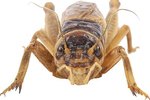The canary is a small bird named after the Canary Islands. It and the Canary Island Date Palm are symbols of the Canary Islands. The canary sold in pet stores is a domesticated version originally bred by monks for its voice. Miners used them to detect gas in coal mines; they acted as miniature early warning systems. Now, however, they are kept primarily as pets and test subjects.
General Care
Canaries need cages roughly 20 to 24 inches long, 12 to 16 inches wide, and 16 to 18 inches high, rather than the round cages that are often depicted in movies and images. Wooden perches of varying width and length are preferable to plastic ones, and sand-covered perches are to be avoided. Seed and water should be available at all times, with a separate water dish for bathing. Avocado and chocolate are toxic to canaries; owners should avoid feeding them anything that has come into contact with either substance. Their food should not go unchanged overnight, and their water should be kept as fresh as possible.
Seeds
Canaries are fairly easy to keep healthy on seeds alone. Vitamin-coated seed mixtures are available at pet stores. Canaries eat approximately 1 tsp. of seed a day, though their appetites might increase during cold weather and when they are molting. An alternative to seeds are pellets, which have more vitamins and proteins. However, canaries often have to be trained to recognize the pellets as food.
Fruits and Greens
Supplementing canaries’ seed diets each day is a good idea for pet owners. Canaries eat vegetables and greens like kale, broccoli, dandelions, spinach, celery, peas and watercress. They also enjoy small amounts of apples, oranges, grapes, bananas and melons. Fruits and greens are treats for canaries, especially when coated with honey. Be careful about over-indulging canaries with them, as these foods in excess contribute to lethargic and lazy birds. Keep greens and fruits on a spike off the floor of cage, and remove uneaten foods before they spoil.
Proteins
Canaries especially need proteins during breeding seasons, but they should have access to supplementary proteins year-round. Canaries enjoy small, live insects like waxworms, crickets and mealworms, but some birds may not recognize them as food after too long in captivity. Instead they can eat canned or freeze-dried insects, usually marketed for reptiles. If pet owners are reluctant to unleash insects in their homes, canaries also receive protein from mashed, hard-boiled eggs. Pet stores also sell a dry egg product that can be moistened and fed to canaries.
Calcium
Canaries get calcium from cuttlebones, which should be available in their cages at all time. Avoid gravel -- canaries shell their seeds and do not need it. You can give them grit, which is very finely ground gravel that is small and soft enough not to harm the inner lining of a canary's stomach. An alternative is also finely ground, heat-sterilized chicken egg shells, but most pet owners find it easier to attach a cuttlebone or buy bird grit.
Coloring
Canary color is often dependent on the bird's diet. In color-bred canaries, red and orange pigments come from their diets. They require special feeding to maintain their intense coloration. Berries, beets, sweet potatoes, squashes, tomatoes, and cherries contain carotenoids, which enhance color. Pet owners can also increase red and orange pigmentation in their birds’ coloring by carefully adding small amounts of cayenne pepper and paprika to the diet.
References
Photo Credits
-
canaris agathe image by Eric Isselée from Fotolia.com
Writer Bio
Andante Sostenuto has been writing online for three years and offline for even longer than that. Prior to working for Demand Studios, she contracted various freelance gigs from sites such as Textbroker, eCopywriters, eHow, and Helium. Sostenuto has had her work published by CFCP Inc. and Creative Communications Inc. She is currently an English major at U.C. Berkeley.



